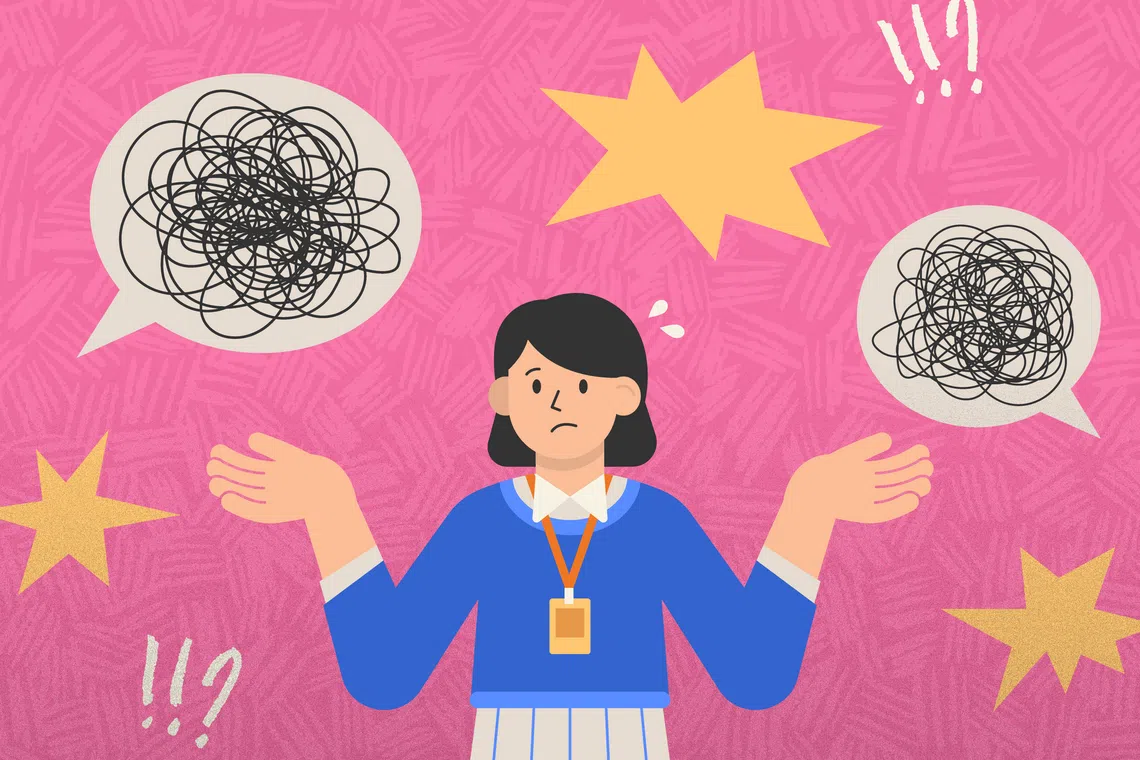askST Jobs: What to do when you’re stuck between 2 feuding colleagues?
Sign up now: Get tips on how to grow your career and money

Careful analyses often reveal that these clashes stem from certain psychological tendencies, says Dr Tania Nagpaul.
ST ILLUSTRATION: LEE YUHUI
Follow topic:
In this series, manpower correspondent Tay Hong Yi offers practical answers to candid questions on navigating workplace challenges and getting ahead in your career. Get more tips by signing up to The Straits Times’ Headstart newsletter.
Q: Two colleagues I work with are not on good terms with each other. How do I navigate the situation?
A: Bias tends to lie at the root of most spoken and unspoken workplace conflicts, according to Dr Tania Nagpaul, senior lecturer in the human resource management programme at the Singapore University of Social Sciences.
Whether it be a passive-aggressive colleague, a toxic boss or the micro-aggressive behaviours of co-workers, careful analyses often reveal that these clashes stem from certain psychological tendencies, she says.
These include assuming things about others, holding firmly to initial impressions of people, or believing that you are objective while considering others irrational.
“The repercussions of these unexamined biases is that it fosters stress among employees, which does not always show up in tears and breakdowns but in silence, in over-preparing or fake smiles,” Dr Nagpaul points out.
“Furthermore, it increases the likelihood of gossiping and venting that usually does more to exacerbate the conflict than resolve.”
There are a few useful ways those caught between two conflicting colleagues – as well as those in conflict themselves – can try to help de-escalate the situation, says Dr Nagpaul.
Start with constructively questioning the involved parties on the issues involved in the conflict and the resolution they seek.
Throughout the process, challenge any biases that might arise within yourself.
These include affinity bias, or preferring one colleague because you identify with that colleague, even if their concerns are unfounded; as well as confirmation bias, in which you give greater weight to evidence that confirms your preconceived notions.
You should also take care not to inadvertently exacerbate the situation by welcoming gossip from either colleague, or even adding your own gossip about either side.
It is also good to adopt a solution-based approach, where you encourage colleagues to think of solutions that would satisfy them, including suggesting potential ones yourself.
Dr Nagpaul says: “If you feel that ‘every problem has a solution’ then you will be poised to resolve conflicts as best you can.”
If a colleague is being particularly difficult and insistent, it may be a cue to switch up how you get across the message to them.
For instance, you could speak to someone in person if they have rejected your offer to help via e-mail, or involve a colleague to provide additional support.
Dr Nagpaul adds: “Don’t end up being a punching bag for colleagues who are in conflict due to (their) ego battles.
“As much as you want to be supportive and helpful, allowing venting without offering any constructive action plan will engulf you in the negativity as well.”
She also suggests that those stuck in the middle not be so hasty in escalating the situation to bosses.
Instead, encourage the conflicting parties to raise their issues to their boss themselves.
This reduces the risk of any resentment or negativity being directed towards you, and increases the likelihood that both parties feel the conflict resolution is proceeding on their own terms.
If forced to choose sides for whatever reason, Dr Nagpaul advocates employees choose the one that fits their core values, for the sake of their own long-term peace of mind.
She notes that a certain level of conflict is inevitable in any social space with human interaction.
“However, I feel that many workplace conflicts may be prevented if we learn to figure out when to disengage.”
She adds: “Keeping your eye on the big picture or goals that matter, choosing to step back, walk away, or disengage is not a sign of weakness, but of wisdom and self-respect.”
Have a question? Send it to askst@sph.com.sg


